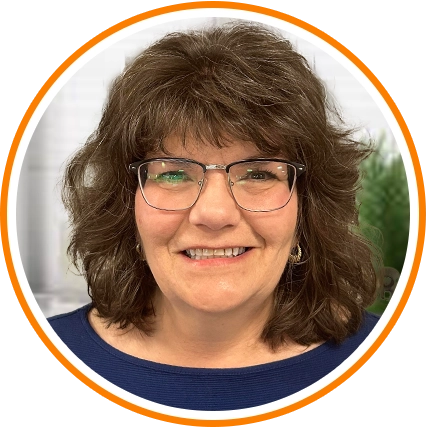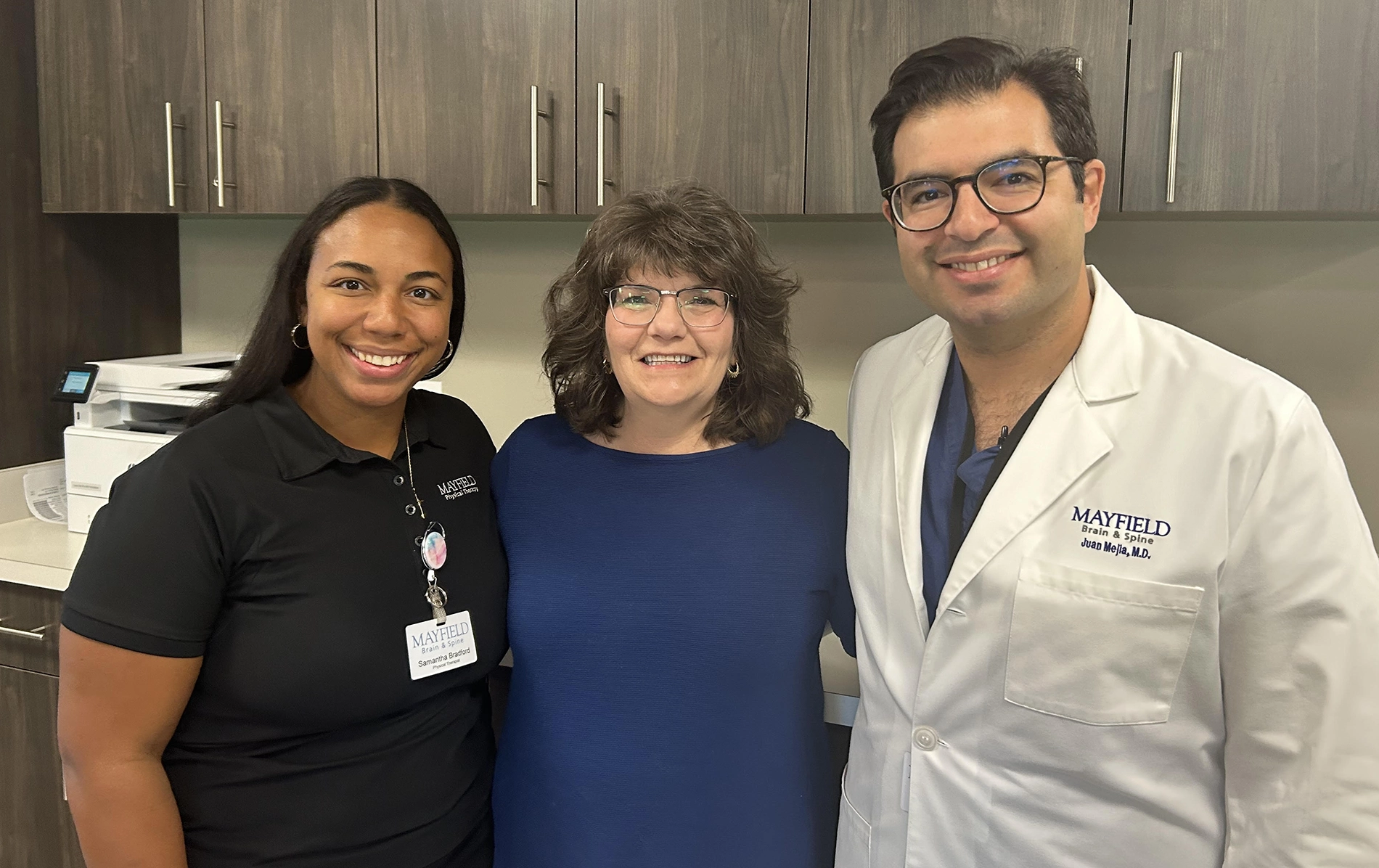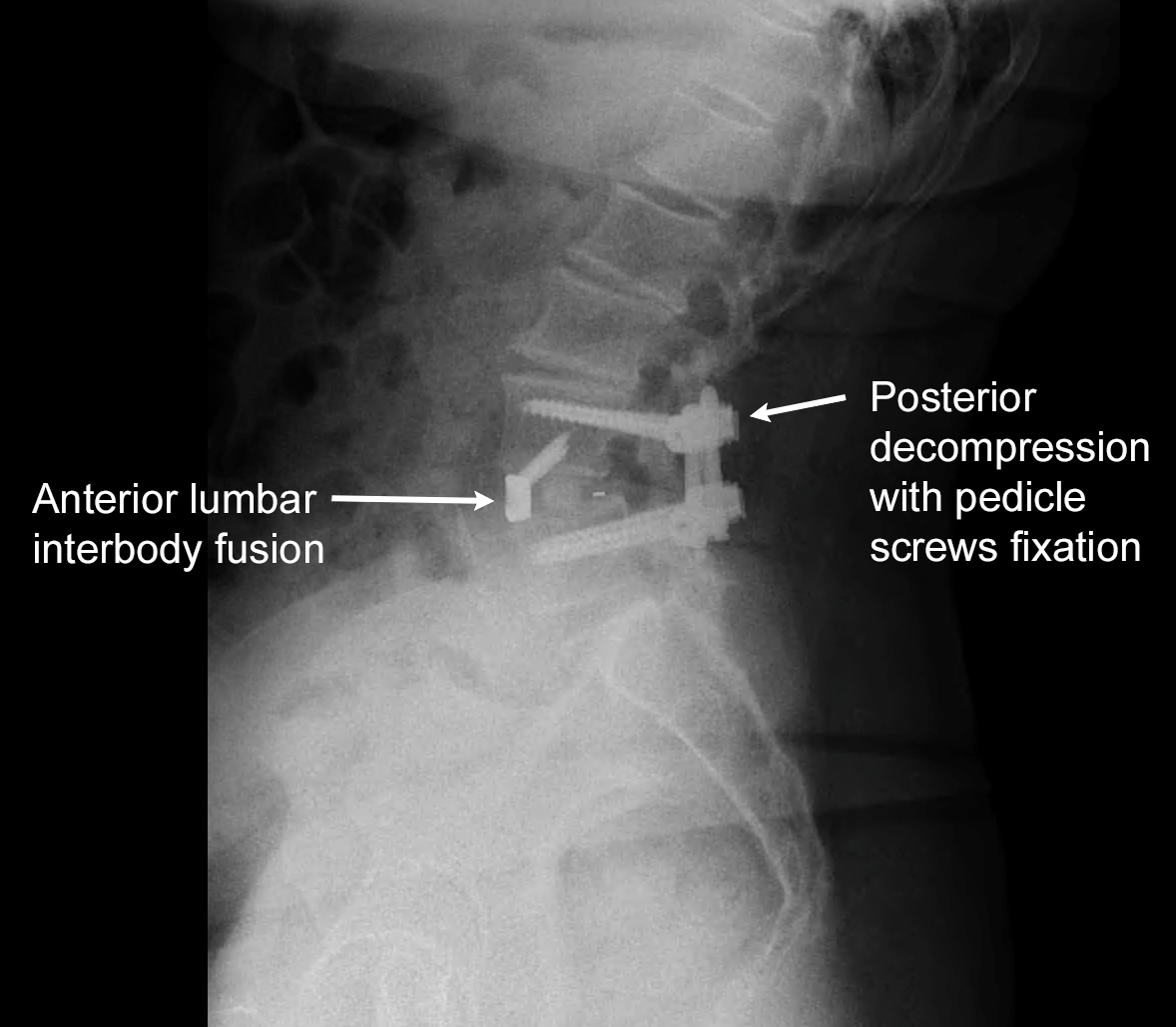
Kristy’s story
Spondylolisthesis, spinal stenosis, ALIF
After spine surgery, Kristy can fulfill her daily activities – and dance
Kristy lives on a 30-acre farm east of Cincinnati, and working around the property has been a big part of her life. That caused plenty of soreness in her back during the last decade. In recent months, she started experiencing pain and weakness down her right side, all the way down to her toes.
When she was forced to find lighter tools so she could do simple tasks like clearing weeds away, she knew she had a problem. When she had to stop traveling with her family – or even stop going to the supermarket – she knew she needed help. At one point, she changed jobs so she would be moving around less, and sitting proved even more painful.
"When I found out that just sitting there was hurting me more, it was devastating," she said. "I have had lots of back pain, but I had never let it hinder me. It just got to be more than I could handle."
Kristy tried several treatments to manage her pain. Finally, a family member suggested calling Mayfield Brain & Spine. When Kristy called, she answered a few questions about her condition from Ashley, part of Mayfield's Access Coordination team that connects patients with the best physician and provider team to help them.
"After talking with Kristy, it was clear that she needed further evaluation to outline her options," Ashley said. "I helped her set up an appointment with one of our neurosurgeons closest to where she lives."
In this case, that was Dr. Juan C. Mejia Munne, a neurosurgeon and spine specialist in Mayfield's Anderson Township office. Only a few days after her first call to Mayfield, Kristy had an appointment with Dr. Mejia Munne, who recognized the damage to the L4-L5 levels of her lower back, or lumbar spine.
He recommended an MRI scan; a round of pain injections, called epidural steroid injections, that go directly into the space surrounding the nerve and reduce inflammation; and physical therapy.

Physical therapist Samantha Bradford, Kristy, and Dr. Mejia Munne
Dr. Mejia Munne said there were several factors causing Kristy's symptoms, including stenosis, or the narrowing of the bony canal where the nerves and spinal cord pass, and mobile spondylolisthesis, a condition where a vertebra slips forward over the one below it. When the injections and physical therapy didn't provide significant relief, he recommended surgery.
"Many patients who suffer from a mobile spondylolisthesis develop severe back pain from the spinal instability, along with significant leg symptoms such as radiating pain, numbness and weakness from pressure on the nerve roots," he said. "We needed to restore the stability in her spine and decompress her nerve roots. Fortunately, many of these surgeries can now be done using minimally invasive techniques to reduce surgical pain and optimize recovery after the surgery."
During the initial phase of the surgery, Dr. Mejia Munne fused the L4 and L5 vertebra together using a surgical technique called an anterior lumbar interbody fusion, or an ALIF, to restore normal alignment to Kristy's spine. The surgical team then used incisions placed on her back to complete the second phase of the operation. Using a minimally invasive tubular retractor and a microscope, they decompressed the spinal canal to remove pressure on the nearby nerve roots. Finally, they placed screws in her L4 and L5 vertebra to secure the fused area.

X-ray of Kristy's spine after surgery
After the surgery, Kristy spent one night in the hospital, and she was walking without a walker in three days. Within a week, all of her pain was gone. She started working with Mayfield physical therapist Samantha Bradford in the Anderson office, with a goal of sitting comfortably when she returned to work – and consistently living free of the pain.
"Kristy is working hard to improve flexibility in her lower back and legs, and to strengthen her core area," Bradford said. "This regimen of stretching and strengthening will help her with day-to-day functional activities, including walking and chores around the farm."
Now, Kristy said, "I feel wonderful. I can walk anywhere I want."
During one of her follow-up appointments with Dr. Mejia Munne, Kristy tried to show him how much better she felt.
"I was feeling so much better," she said. "I asked him if he wanted to dance."
~ Cliff Peale
Hope Story Disclaimer -"Kristy's Story" is about one patient's health-care experience. Please bear in mind that because every patient is unique, individual patients may respond to treatment in different ways. Results are influenced by many factors and may vary from patient to patient.
